- عنوان کتاب: Graph Machine Learning, Second Edition
- نویسنده: Aldo Marzullo, Enrico Deusebio, Claudio Stamile
- حوزه: یادگیری ماشین
- سال انتشار: 2025
- تعداد صفحه: 435
- زبان اصلی: انگلیسی
- نوع فایل: pdf
- حجم فایل: 5.59 مگابایت
این ویرایش دوم بهروز شده و گسترشیافته، پیشرفتهای قابل توجهی را برای کمک به شما در پیشبرد حوزه در حال تکامل یادگیری ماشین گراف ارائه میدهد. در مقایسه با نسخه قبلی، این ویرایش شامل فصلهای اصلاحشده برای وضوح و جریان بهتر، مثالهای جدید با استفاده از ابزارهای قدیمی و چارچوبهای مدرن مانند PyTorch و DGL و فصلهای کاملاً جدیدی است که موضوعات پیشرفتهای مانند یادگیری ماشین گراف زمانی و ادغام مدلهای زبان بزرگ (LLM) را پوشش میدهد. یادگیری ماشین گراف، یک جعبه ابزار قدرتمند برای پردازش دادههای ساختاریافته شبکهای و استفاده از روابط بین موجودیتها برای مدلسازی پیشبینی، تجزیه و تحلیل و موارد دیگر ارائه میدهد. شما با مقدمهای مختصر در مورد نظریه گراف، یادگیری ماشین گراف و شبکههای عصبی شروع خواهید کرد و درک بنیادی از اصول و کاربردهای آنها ایجاد خواهید کرد. با پیشرفت، به مدلهای اصلی یادگیری ماشین برای یادگیری نمایش گراف خواهید پرداخت، اهداف، عملکرد داخلی و پیادهسازی عملی آنها را در وظایف مختلف تحت نظارت و بدون نظارت بررسی خواهید کرد. شما یک خط لوله یادگیری ماشین سرتاسری، از پیشپردازش دادهها گرفته تا آموزش و پیشبینی، برای بهرهبرداری کامل از پتانسیل دادههای گراف توسعه خواهید داد. در سراسر کتاب، سناریوهای دنیای واقعی مانند تحلیل شبکههای اجتماعی، پردازش زبان طبیعی با گرافها و سیستمهای تراکنش مالی را خواهید یافت. فصلهای بعدی شما را با ایجاد برنامههای کاربردی مقیاسپذیر و دادهمحور برای ذخیرهسازی، پرسوجو و پردازش دادههای گراف آشنا میکنند و شما را با پیشرفتهای اخیر و روندهای نوظهور در این حوزه آشنا میکنند، که برخی از آنها تعامل بین گرافها و LLM های مورد استفاده در زمینه هوش مصنوعی مولد و سیستمهای تولید افزوده بازیابی (RAG) هستند. در پایان این کتاب، شما مفاهیم کلیدی نظریه گراف و الگوریتمهای یادگیری ماشین را درک خواهید کرد و به شما امکان میدهد راهحلهای یادگیری ماشین مبتنی بر گراف مؤثری را توسعه دهید. این کتاب برای تحلیلگران داده، توسعهدهندگان گراف، تحلیلگران گراف و متخصصان گراف است که میخواهند از اطلاعات نهفته در ارتباطات و روابط بین نقاط داده استفاده کنند، ساختارهای پنهان را آشکار کنند و از اطلاعات توپولوژیکی برای افزایش تجزیه و تحلیل و عملکرد مدلهای خود بهرهبرداری کنند. این کتاب همچنین برای دانشمندان داده و توسعهدهندگان یادگیری ماشین که میخواهند پایگاههای داده گراف مبتنی بر یادگیری ماشین بسازند، مفید خواهد بود. فصل ۱، شروع کار با گرافها، مفاهیم اولیه نظریه گراف را با استفاده از کتابخانه NetworkX پایتون معرفی میکند. فصل ۲، یادگیری ماشین گراف، مفاهیم اصلی یادگیری ماشین گراف و تکنیکهای جاسازی گراف را معرفی میکند. فصل ۳، شبکههای عصبی و گرافها، شبکههای عصبی گراف (GNN) و کتابخانههای پیشرو برای یادگیری عمیق مبتنی بر گراف را معرفی میکند. فصل ۴، یادگیری گراف بدون نظارت، روشهای اخیر جاسازی گراف بدون نظارت را پوشش میدهد. فصل ۵، یادگیری گراف با نظارت، روشهای اخیر جاسازی گراف با نظارت را پوشش میدهد. فصل ۶، حل مسائل رایج یادگیری ماشین مبتنی بر گراف، رایجترین وظایف یادگیری ماشین روی گرافها را معرفی میکند. فصل ۷، گرافهای شبکه اجتماعی، کاربرد الگوریتمهای یادگیری ماشین روی دادههای شبکه اجتماعی را نشان میدهد. فصل ۸، تجزیه و تحلیل متن و پردازش زبان طبیعی با استفاده از گرافها، کاربرد الگوریتمهای یادگیری ماشین را در یک وظیفه پردازش زبان طبیعی نشان میدهد. فصل ۹، تجزیه و تحلیل گرافها برای تراکنشهای کارت اعتباری، کاربرد الگوریتمهای یادگیری ماشین در تشخیص تقلب کارت اعتباری را نشان میدهد. فصل ۱۰، ساخت یک برنامه کاربردی گراف-محور دادهمحور، برخی از فناوریها و تکنیکهای مفید برای کار با گرافهای بزرگ را معرفی میکند. فصل ۱۱، یادگیری ماشین گراف زمانی، بر تکنیکهای مدلسازی و یادگیری از دادههای گراف پویا و در حال تکامل در زمان تمرکز دارد. فصل ۱۲، GraphML و LLMها، بررسی میکند که چگونه ساختارهای گراف میتوانند LLMها را بهبود بخشند و چگونه میتوان از LLMها برای وظایف مبتنی بر گراف استفاده کرد. فصل ۱۳، روندهای جدید در گرافها، برخی از روندهای جدید (الگوریتمها و کاربردها) یادگیری ماشین گراف را معرفی میکند.
This updated and expanded second edition brings several significant improvements to help you stay ahead in the evolving field of graph machine learning. Compared to the previous version, this edition features refined chapters for improved clarity and flow, new examples utilizing both legacy tools and modern frameworks such as PyTorch and DGL, and entirely new chapters covering cutting-edge topics such as temporal graph machine learning and the integration of large language models (LLMs). Graph Machine Learning provides a powerful toolkit for processing network-structured data and leveraging the relationships between entities for predictive modeling, analytics, and more. You’ll begin with a concise introduction to graph theory, graph machine learning, and neural networks, building a foundational understanding of their principles and applications. As you progress, you’ll dive into the core machine learning models for graph representation learning, exploring their goals, inner workings, and practical implementation across various supervised and unsupervised tasks. You’ll develop an end-to-end machine learning pipeline, from data preprocessing to training and prediction, to fully harness the potential of graph data. Throughout the book, you’ll find real-world scenarios such as social network analysis, natural language processing with graphs, and financial transaction systems. The later chapters take you through the creation of scalable, data-intensive applications for storing, querying, and processing graph data and introduce you to the recent breakthroughs and emerging trends in the domain, some of which are the interaction between graphs and LLMs used in the context of generative AI and retrieval-augmented generation (RAG) systems. By the end of this book, you will have understood the key concepts of graph theory and machine learning algorithms, allowing you to develop impactful graph-based machine learning solutions. This book is for data analysts, graph developers, graph analysts, and graph professionals who want to leverage the information embedded in the connections and relations between data points, unravel hidden structures, and exploit topological information to boost their analysis and models’ performance. The book will also be useful for data scientists and machine learning developers who want to build machine learning-driven graph databases. Chapter 1, Getting Started with Graphs, introduces the basic concepts of graph theory using the NetworkX Python library. Chapter 2, Graph Machine Learning, introduces the main concepts of graph machine learning and graph embedding techniques. Chapter 3, Neural Networks and Graphs, introduces Graph Neural Networks (GNNs) and the leading libraries for graph-based deep learning. Chapter 4, Unsupervised Graph Learning, covers recent unsupervised graph embedding methods. Chapter 5, Supervised Graph Learning, covers recent supervised graph embedding methods. Chapter 6, Solving Common Graph-Based Machine Learning Problems, introduces the most common machine learning tasks on graphs. Chapter 7, Social Network Graphs, shows an application of machine learning algorithms on social network data. Chapter 8, Text Analytics and Natural Language Processing Using Graphs, shows an application of machine learning algorithms on a natural language processing task. Chapter 9, Graphs Analysis for Credit Card Transactions, shows an application of machine learning algorithms in credit card fraud detection. Chapter 10, Building a Data-Driven Graph-Powered Application, introduces some technologies and techniques useful to deal with large graphs. Chapter 11, Temporal Graph Machine Learning, focuses on techniques to model and learn from dynamic, time-evolving graph data. Chapter 12, GraphML and LLMs, explores how graph structures can enhance LLMs and how LLMs can be used for graph-based tasks. Chapter 13, Novel Trends on Graphs, introduces some novel trends (algorithms and applications) of graph machine learning.
این کتاب را میتوانید از لینک زیر بصورت رایگان دانلود کنید:
Download: Graph Machine Learning, Second Edition



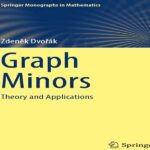




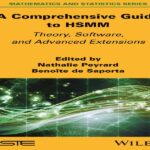
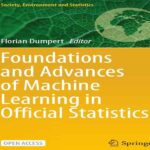


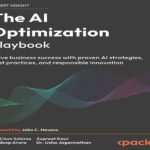
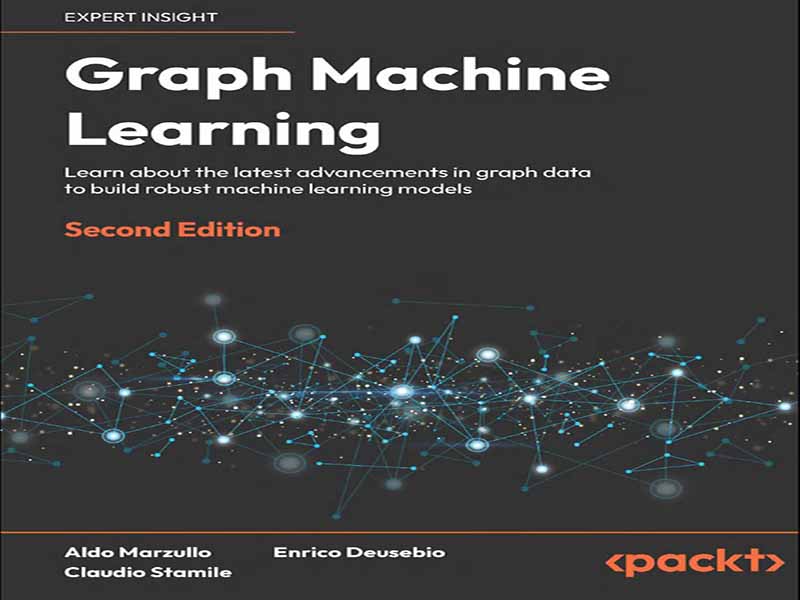























نظرات کاربران